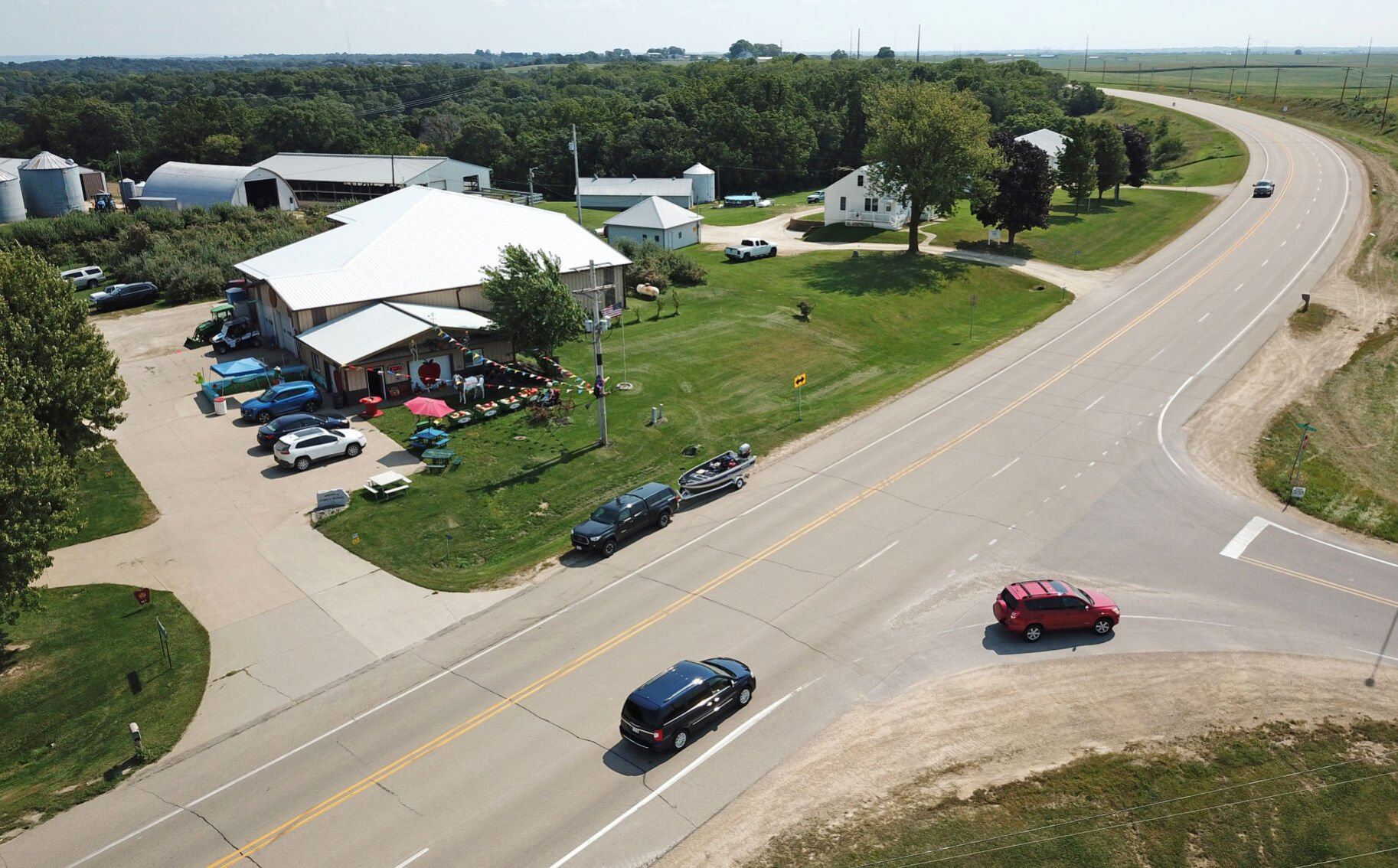A recently received state traffic study of the area near the autumnal favorite Czipar’s Orchard south of Dubuque recommends more prominent signage to help address safety concerns.
But the Iowa Department of Transportation study was requested by the Dubuque County Board of Supervisors and Sheriff Joe Kennedy a year ago — during Czipar’s last busy season. It arrived with the orchard already open again and drawing crowds at the intersection of U.S. 52 and Schueller Heights Road.
“We knew this was a problem last year, and now, we’re finally getting it answered this year, but it’s in-season again,” said County Supervisor Harley Pothoff this week. “There’s really not much we’re going to be able to do for this season.”
Local officials have long expressed concerns about the number of orchard visitors that park along the shoulder of the highway each fall, with some then crossing the highway on foot to collect their annual apples and cider.
As noted in the study, the intersection is near the crest of a hill that “may obstruct the sightlines of motorists northbound on U.S. 52” and on a curve in the road “potentially diminishing sight distances for motorists traveling on U.S. 52 and those stopped at the intersection.”
The Czipars told Snyder & Associates, the firm contracted by the DOT to conduct the study, that they have a parking lot available, but that many visitors don’t use it.
“The problem with parking alongside the road is that once one person does it, they’re all going to do it,” Kennedy said.
The study found there were 10 recorded crashes at the intersection in a 10-year period. Orchard co-owner Steve Czipar said that none of those 10 crashes were due to orchard visitors but involved drivers trying to turn at the intersection.
Kennedy said drivers’ behavior — both locals and tourists — as well as the on-shoulder parking combine to make the intersection risky.
“We haven’t had any really bad accidents,” he said. “But we were out there last fall for just 20 minutes in the driveway, and two separate cars were southbound in the outside lane. Both turned into the driveway, which is great, except they did it from the outside lane, so crossed the other southbound lane and then the northbound lane. I don’t know how they didn’t get creamed pulling that move.”
The study found that traffic has increased steadily in the area since the opening of the Southwest Arterial as more motorists travel Olde Davenport Road to Schueller Heights to reach U.S. 52.
“While the percentage increase for Schueller Heights Road is high (55% increase), the absolute number of additional traffic is not large (307 vehicles per day),” it reads.
County Engineer Russell Weber said the study likely doesn’t capture the level of traffic during the orchard’s busy season.
“You might not be able to fully evaluate the increase in traffic because this 100-hour study was done out of season,” he said. “There would be much higher traffic in-season, which the study did not encompass.”
Due to the intersection’s location, the solutions outlined in the state study mostly involve increasing the amount and prominence of signage informing drivers of the curve, the intersection and the orchard.
A sign for southbound traffic on U.S. 52 would cover traffic options at the intersection while a northbound sign would inform drivers of the intersection with Schueller Heights. The $3,5000 cost of those could be covered by the state, with or without help from the county.
A proposed tourist-oriented directional sign and the construction of a sign announcing on-site parking would be the responsibility of Czipar’s unless the business gets a state grant.
Kennedy said Czipar has applied for that grant but was turned down because business is seasonal.
“However, our thought was that — given the fact that the state has done this study and that this is the recommendation — they should reapply because now we have this to say, ‘Your own study said that we need this,’” he said.
Czipar said any solution that improves the traffic situation would help.
“We’re willing to try anything to keep people safe,” he said. “But the state dumped the Southwest Arterial onto Olde Davenport Road without thought to what it would do to other intersections. They should shorten the passing lane up, use that real estate for a turning lane onto Schuller Heights, then drop the speed limit down.”
In the year since the study was requested, Czipar’s increased the size of the parking lot — as much as possible without tearing out apple trees or purchasing neighboring land — and put in a larger sign announcing on-site parking. But, as noted in the report, even the previously smaller parking lot was never filled before people started parking on the highway.
The most extreme option available is making the highway a no-parking area, which would allow the ticketing of people parked there, an acceptable option to Kennedy.
County officials said they will weigh their options and implement solutions as early as they can, so they are not in the same position next September. Until then, Kennedy said, his department will increase enforcement for upcoming weeks in an attempt to at least keep speeds down.
Most of all, officials asked that people simply stop parking on the side of the highway.


